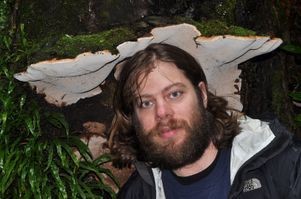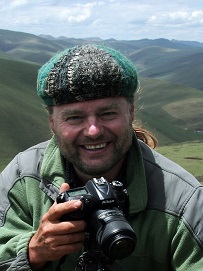Events
2025 PSMS Annual Wild Mushroom Show
Our Wild Mushroom Show is one of the largest and most complete exhibits of mushrooms in the United States. Over 200 varieties of wild mushrooms will be displayed, identified, and classified as edible, poisonous, or valueless as food.
Visitors are welcome to bring in mushrooms from your garden or walks for our experts to identify. Be sure to collect the entire mushroom, including underground parts.
Exhibits will include something for all of the senses: A feel and smell display can be experienced after the slide show lecture and finished off by a delicious tasting of mushrooms. There are photography displays as well as a great selection of items for sale like mushroom field guides, cookbooks, t-shirts, and scientific materials for the serious mycologist. Visitors can discover facts about PSMS and obtain information about classes, field trips and other opportunities. Thank you for your interest and for supporting PSMS!
Location and Times
Shoreline Community College
16101 Greenwood Avenue North
Shoreline, WA 98133
Saturday October 25 (12-6pm) and Sunday October 26 (10am-5pm)
Admission fees
Adults $10, Students $5 with ID card, and children under 12 are free.
PSMS Members who are volunteering for the show are able to enter for free.
Mask-wearing is strongly recommended.
Click here to download show info
Speaker Schedule
Saturday October 25, 2025| Time | Speaker | Title of Lecture |
|---|---|---|
| 1:00 - 2:00 | Noah Siegel | Cascadia: A Fungal Paradise |
| 2:15 - 3:15 | Daniel Winkler | Fungal Fruits of the Forest: Choice Edible Mushrooms of the Pacific Northwest |
| 3:30 - 4:30 | Dr. Katherine Glew | Lichens: Their Role in Pacific Northwest Environments |
| 4:45 - 5:45 | Dr. Denis Benjamin | Medicinal Mushrooms: Hope or Hype |
| Time | Speaker | Title of Lecture |
|---|---|---|
| 11:00 - 12:00 | Daniel Winkler | Great Edible Mushrooms Found Around the World |
| 12:15 - 1:15 | Dr. Michael Beug | Should I have picked that mushroom either to eat or for art? |
| 1:30 - 2:30 | Noah Siegel | Adventures of a Mycohobo |
| 2:45 - 3:45 | Chad Hyatt | The Mushroom Hunter's Kitchen |
Speaker Bios
Denis R Benjamin, MD grew up in South Africa and emigrated to the Pacific Northwest in 1970. He practiced pediatric pathology at children's hospitals in Seattle, Washington, and Fort Worth, Texas. He became an amateur mycologist soon after arriving in the USA. He served as a consultant to the regional poison control center, was a member of the Board of Trustees of the Puget Sound Mycological Society, and was a past Chairman of the Toxicology Committee of the North American Mycological Association. He frequently speaks at mushroom clubs and societies. Besides nearly 100 professional publications, he has contributed to popular literature and mushroom magazines, such as FUNGI Magazine. He was a community Op/Ed writer for the Fort Worth Star-Telegram and a Research Associate at the Botanic Research Institute of Texas in Fort Worth. He authored the landmark book on the health effects of mushrooms, Mushrooms: Poisons and Panaceas, and published collections of mushroom foraging essays, including Musings of a Mushroom Hunter: A Natural History of Foraging and Mushroom Mania: Facts and Fiction, Hope or Hype. In of Foraging* and *Mushroom Mania: Facts and Fiction, Hope or Hype*. In later years, he became a watercolorist focusing on fungi and botanical art. He was featured in 360West Magazine - https://360westmagazine.com/features/2019/06/the-art-of-the-plant/

Michael Beug, Ph.D.
completed his Ph.D. in Chemistry at the University of
Washington in 1971. He spent 32 years at The Evergreen State College in
Olympia, Washington where he taught chemistry, environmental studies,
mycology, and organic farming. Michael started mushrooming in 1968. His
photographs now have appeared in well over 80 books and articles on
mushrooms. In 1974 he joined both the Pacific Northwest Key Council and the
North American Mycological Association (NAMA where, he served on the
Education Committee, was chair of the Toxicology Committee, chair of the
Editorial Committee, and past editor of the Journal McIlvainea and is now active
on the medicinal mushroom committee). He won the 2006 NAMA Award for
Contributions to Amateur Mycology. With coauthors Alan and Arleen Bessette,
he wrote Ascomycete Fungi of North America: A Mushroom Reference
Guide, University of Texas Press, 2014.
Michael's website, www.mushroomsofcascadia.com, has information about
his book, Mushrooms of Cascadia: An Illustrated Key to the Fungi of the
Pacific Northwest, Second Edition, Ten Speed Press, speaking schedule,
updates to our knowledge of western fungi, and links to podcasts and videos.
In his presentation: "Should I Have picked that Mushroom to Eat or for
Art?" he will discuss how to identify and avoid collecting the most poisonous
mushrooms of Cascadia; recognize the abundant edible species that are both
distinctive and delicious or highly medicinal; and select the best mushrooms to
gather for fungal pigments and dyes or other art projects. He will close with the
utility of his illustrated key in these endeavors and the free features available on
his website https://www.mushroomsofcascadia.com.
Katherine Glew, Ph.D.is Assistant Curator of lichens and bryophytes at the
University of Washington Herbarium. Dr. Glew is presently curating historic
collections and processing lichens collected from the Russian Far East. In addition to
curation responsibilities, her research interests include studying alpine community
structure on Mount Rainier and lichens from island ecosystems.
After a 20-year career as a high school biology teacher, Katherine returned to the
University of Washington for her Ph.D., where her research focused on
lichen taxonomy and alpine vegetation ecology. After graduation she pursued post-
doctoral research in Bergen, Norway and the Field Museum of Natural History in
Chicago. From 2000 through 2003, Dr. Glew taught biodiversity, ecology, and
cryptogamic botany at the University of Puget Sound (UPS). She mentored four
students, while at UPS, resulting in undergraduate senior theses. During the
summers of 2001 and 2003, Katherine joined Ted Pietsch, from the University
of Washington, in the International Sakhalin Island Project (ISIP) to study the lichen
biodiversity of temperate regions from the Russian Far East. Katherine's interests
also include lichens found in the San Juan Islands and lichen succession. She is
actively involved with conservation in the lichenological community. Dr. Glew heads
a lichen study group, meeting weekly at the University of Washington.
Katherine has a BA in biology, a M.Ed. in science curriculum and instruction, and a
Ph.D. in botany from the University of Washington. Her presentation is titled:
"Lichens: Their Role in Pacific Northwest Environments," what they are, where they're
found, and how they contribute to the ecosystem.

Noah Siegel
is one of North America's foremost field mycologists; he has spent over
three decades seeking, photographing, identifying, and furthering his knowledge
about all aspects of macrofungi. He travels and lectures extensively across America,
following the mushrooms from coast to coast.
Noah was the recipient of the 2022 North American Mycological Association's
Award for Contributions to Amateur Mycology. His primary research interest is on the
taxonomy and systematics of fungi.
He authored, along with Christian Schwarz, Mushrooms of the Redwood Coast, a
Comprehensive Guide to the Fungi of Coastal Northern California and Mushrooms of
Cascaida, a Comprehensive Guide to Fungi of the Pacific Northwest, as well as A
field Guide to the Rare Fungi of California's National Forests. His new
book, Mushrooms of Alaska, with Steve Trudell and Kate Mohatt is being released in
October.
Noah will present two lectures. The first on Saturday will be "Cascadia — A
Fungal Paradise." The wet mossy forests, transitioning over the crest of the Cascade
Range into high dessert allow the Pacific Northwest host a spectacular diversity of
mushrooms, a true fungal paradise! This talk will highlight this diversity, the unique
habitats, and its plethora of mushrooms. On Sunday he will present: "Adventures of
a Mycohobo." Ever wonder what mushrooms occur in the jungles of tropical Africa
and South America, or the dripping, moss covered Antarctic Beech forests of New
Zealand, or the diverse ecologies across North America? We will take a photo safari
of some of the places he has been working, and highlight his favorite mushrooms
and ecosystems.
Chad Hyatt
is an expert forager and classically trained chef who has made a name
for himself in northern California and beyond, sharing his delicious spin on wild
mushroom cookery. He has cooked in a variety of restaurants and private clubs
around the San Francisco Bay area. Chad can often be found foraging for
mushrooms, putting on wild mushroom-themed dinners, teaching mushroom-related
classes, and attending mushroom festivals around the United States. He is
passionate about cooking approachable comfort food based on local, seasonal
ingredients, and, of course, wild mushrooms.
The title of his talk is "The Mushroom Hunter's Kitchen." In his presentation he
will describe what makes a mushroom "good" to eat—and who gets to decide? Join
Chad as he explores the often-overlooked nuances behind mushroom edibility and
culinary use. From challenging conventional wisdom to rethinking flavor pairings,
Chad will share insights into the art of cooking with mushrooms. Expect a fresh take
on how we judge, prepare, and celebrate mushrooms in the kitchen.

Daniel Winkler
— Daniel is the author of field guides to Edible Mushrooms of the
Pacific Northwest and California, Amazon Mushrooms and brand a new Field
guide to Medicinal Mushrooms of North America with Robert Rogers. He grew
up collecting and eating wild mushrooms in the Alps and has been foraging for
over 20 years in the PNW and beyond, sharing his enthusiasm as a mushroom
educator and guide and as PSMS vice-president. In his presentations he is
combining his stunning photography with an often funny blend of entertaining
stories and scientific information; he likes to refer to as "edutainment". Having
been in love with mushrooms since early childhood Daniel managed to bend his
career as an ecologist and geographer focused on High Asia towards
researching rural Tibet's enormous fungal economy. His Cordyceps research has
been featured in The Economist, National Geographic, New York Times,
Washington Post, NPR, BBC World Service etc. In the last decade Daniel started
exploring neotropical fungi. With his travel agency MushRoaming, Daniel is
organizing mushroom focused eco-adventures to Tibet, Bhutan, China, the
Amazon, Colombia, the Austrian Alps and the Pacific Northwest since
2007 [www.mushroaming.com].
On Saturday he will present his always-popular "Fungal Fruits of the Forest:
Choice Edible Mushrooms of the Pacific Northwest" with amazing pictures of
what's good to eat and what's not. Some of the best edible mushrooms in the
world can be found in the Pacific Northwest. Fortunately, many of these choice
edibles—like Porcini and other boletes, Chanterelles, Hedgehogs, Matsutake,
Bear's Head/Lions mane, Cauliflower mushrooms, Oysters, and Saffron
Milkcaps—are fairly easy to identify, helping one to overcome fungophobia and
truly appreciate wild mushrooms. On Sunday Daniel will present: "Great Edible
Mushrooms Found Around the World", a fascinating compilation of Daniel's
travels and foraging adventures around the world.
If You Suspect
a Poisoning
Contact a physician
or Washington Poison
Center: 1-800-222-1222
Join PSMS
Come learn with us in our meetings, classes, field trips and more!
Benefits of Joining Join OnlineAnnual Wild
Mushroom Show
Our Wild Mushroom Exhibit is one of the largest and most complete in the United States. Over 200 varieties of wild mushrooms will be displayed, identified, and classified.
Learn moreFeatured content
-
Spore Prints Newsletter
PSMS monthly newsletter of announcements, tidbits, recipes, and research developments. Learn more ›
-
Harvest Rules
Learn the proper rules for each jurisdiction in Washington. Learn more ›